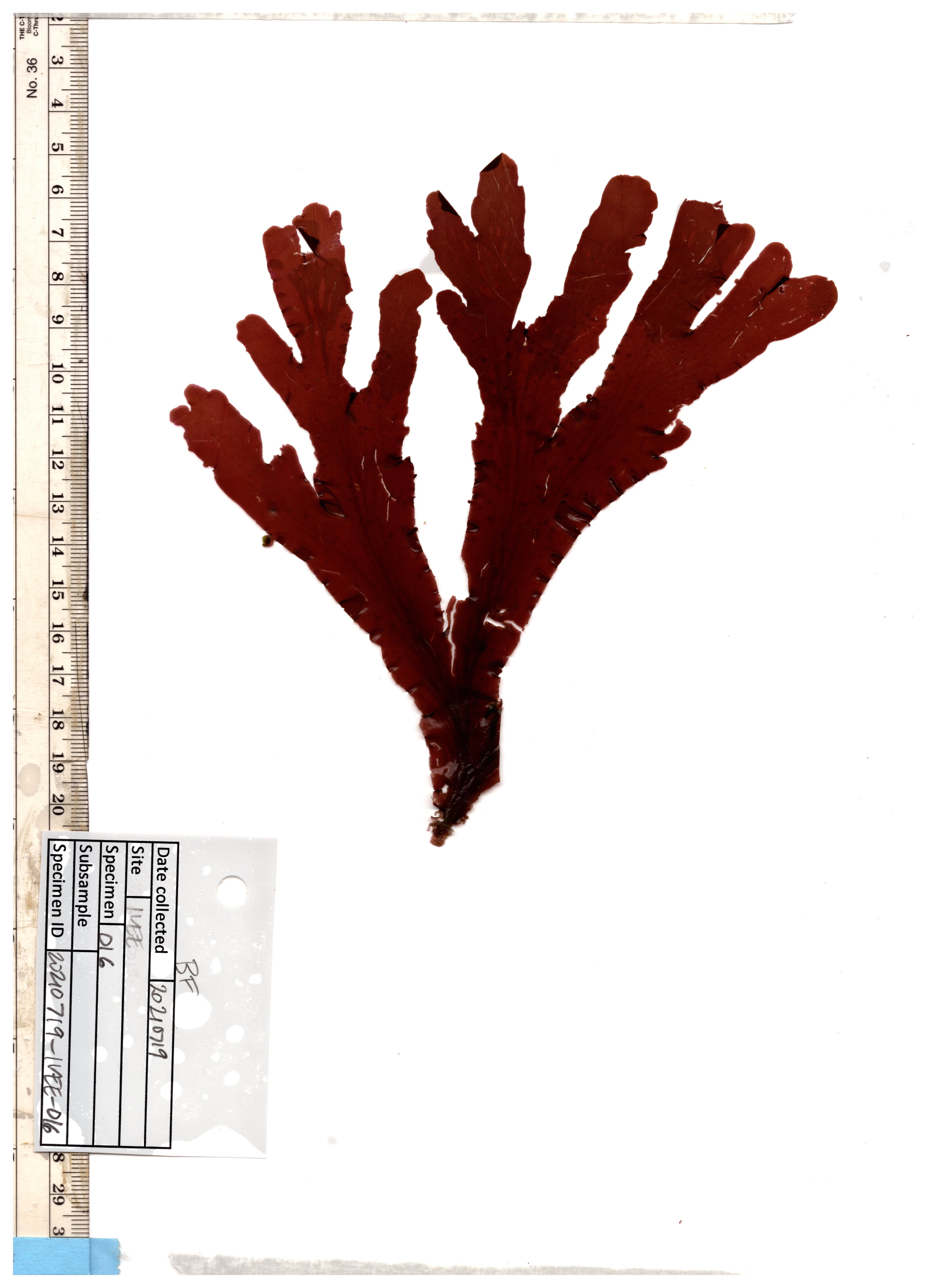Functional traits provide a potentially useful way to identify patterns in nature. Functional traits are morphological, physiological, or behavioral characteristics that define species’ roles in ecosystems and responses to environments. Methods of describing species via their traits range from coarse (e.g. functional form or group) to fine (e.g. measuring leaf area), with increasing insight into the functional role of a species with increasing resolution. By defining ecological communities by their functions rather than taxonomic composition, we can make comparisons across communities independently of species identity, making generalization and identification of patterns possible. In this project, I ask what the primary traits defining macroalgal species differences are, and how they can explain patterns through time in changing community composition.
To answer these questions, I work in unceded Barbareño Chumash land, or the Santa Barbara Coastal Long-term Ecological Research site (SBC LTER). I hypothesized that the most meaningful traits differentiating species would be related to photosynthesis and competition for space, given that light and substrate are major determinants of benthic macroalgal community structure. I measured a suite of traits related to light capture, physical structure, and herbivore palatability for the most common species in the SBC LTER.
Preliminary data suggest that a few traits define much of the variation amongst individuals.


